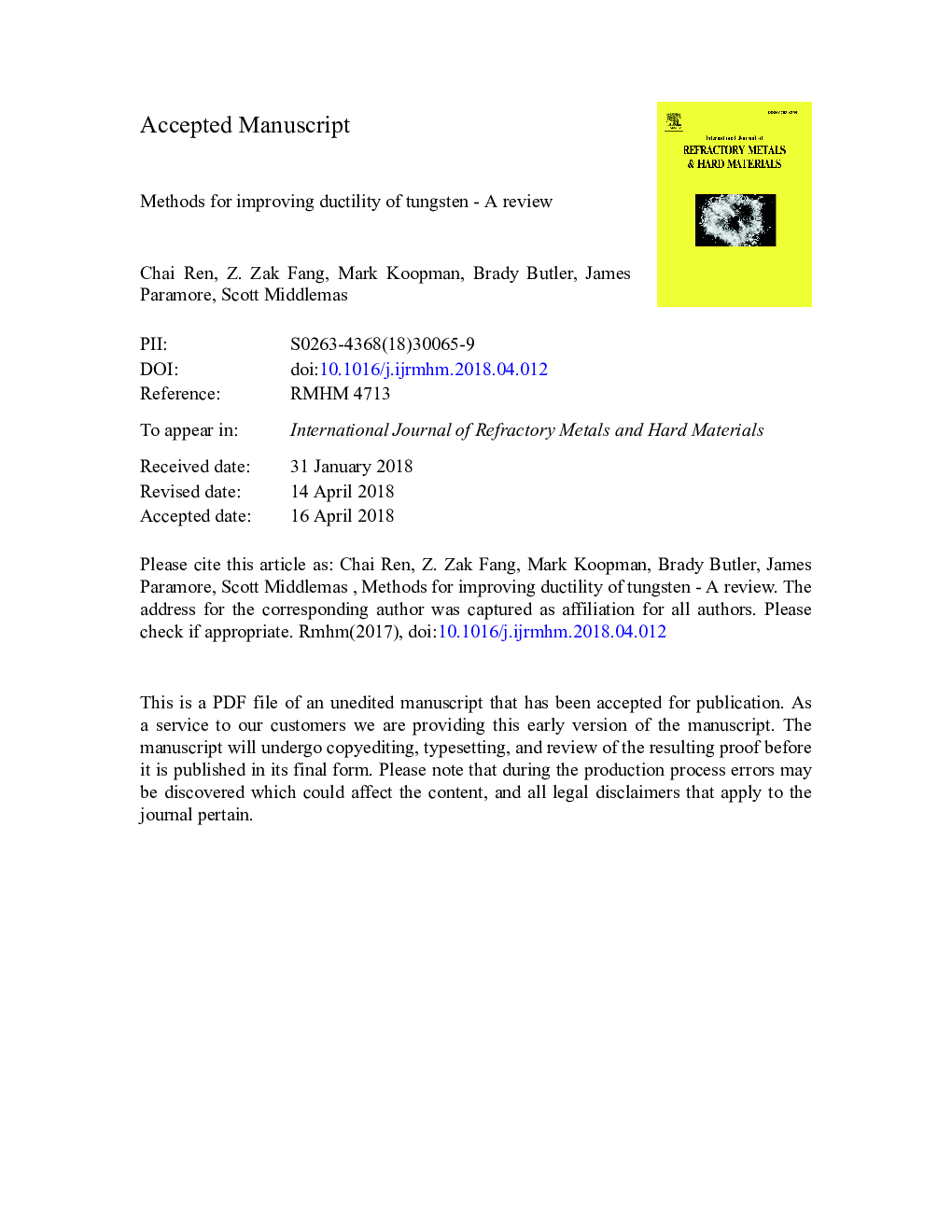| کد مقاله | کد نشریه | سال انتشار | مقاله انگلیسی | نسخه تمام متن |
|---|---|---|---|---|
| 7989579 | 1515943 | 2018 | 44 صفحه PDF | دانلود رایگان |
عنوان انگلیسی مقاله ISI
Methods for improving ductility of tungsten - A review
ترجمه فارسی عنوان
روشهای بهبود تنش تنگستن - بررسی
دانلود مقاله + سفارش ترجمه
دانلود مقاله ISI انگلیسی
رایگان برای ایرانیان
کلمات کلیدی
تنگستن، متالورژی پودر، ریز ساختار، ویژگی های مکانیکی، شکل پذیری،
موضوعات مرتبط
مهندسی و علوم پایه
مهندسی مواد
فلزات و آلیاژها
چکیده انگلیسی
Pure tungsten and tungsten alloys with minor alloying additions are known to be brittle at room temperature and have high ductile-to-brittle transition temperatures (DBTT). Improving the ductility of tungsten can have significant impact on both the manufacturing of and the range of applications of tungsten. Although there has been a significant volume of reported research on improving the ductility of tungsten over the span of several decades, it remains a difficult challenge. This is at least partially attributable to the fact that the understanding on the mechanical properties of tungsten and their dependence on microstructure has been insufficient. This article attempts to offer a critical review of the methods that have been reported in the literature for improving the ductility of tungsten in order to understand the critical factors that control the ductility (or lack thereof) in tungsten. It is clear from the literature that all tungsten materials that have been reported to be ductile at room temperature, or to have drastically reduced DBTT, are the result of thermomechanically processed (TMP) material with deformed and textured microstructures. Alloying tungsten with rhenium is essentially the only known method to improve the ductility of tungsten by alloying (excluding the class of alloys known as heavy alloys which are composites of tungsten with nickel and iron). Although there have been a large number of research reports in recent years on the effect of additives, including oxides, carbides, and others, the results are inconclusive to date or insignificant with respect to the effects of those additives on the ductility of tungsten independent of the effects of thermomechanical working. Using ultrafine-grained or nanocrystalline microstructure to improve the ductility of tungsten is another approach that has appeared promising. However, the results to date have not shown that the ductility of tungsten can be improved by reducing the grain size alone, without the benefits of thermomechanical processed or deformed microstructures. Another objective of this review is to examine the correlation between the ductility of tungsten and different microstructures resulting from different processing methods and compositions.
ناشر
Database: Elsevier - ScienceDirect (ساینس دایرکت)
Journal: International Journal of Refractory Metals and Hard Materials - Volume 75, September 2018, Pages 170-183
Journal: International Journal of Refractory Metals and Hard Materials - Volume 75, September 2018, Pages 170-183
نویسندگان
Chai Ren, Z.Zak Fang, Mark Koopman, Brady Butler, James Paramore, Scott Middlemas,
